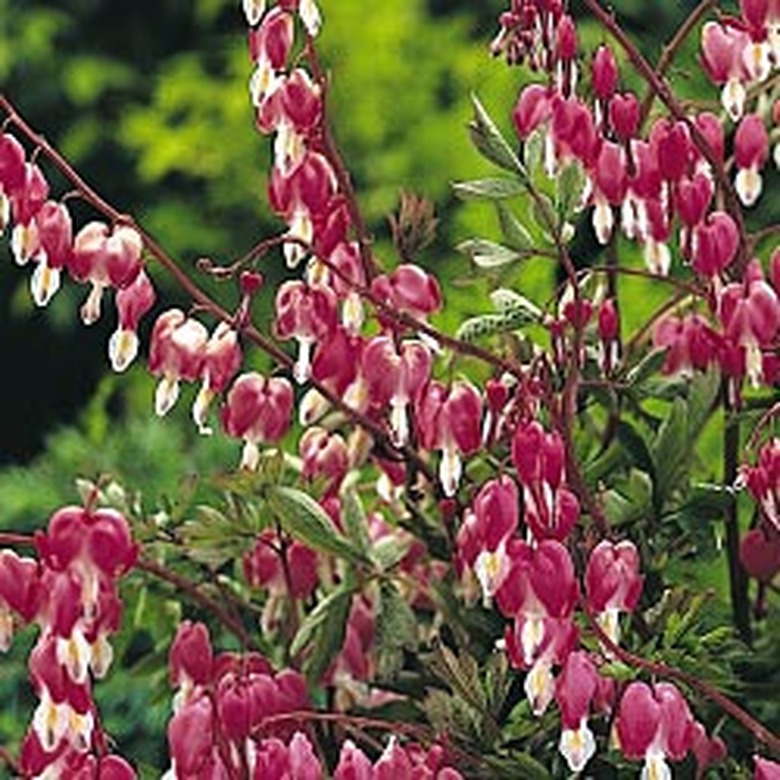How To Winterize Bleeding Heart
With fern-like foliage and curving stems of heart-shaped flowers, bleeding heart is a favorite in perennial gardens. The old-fashioned variety blooms in the summer, while the fringed-leaf bleeding heart blooms from summer to frost. Part of caring for a bleeding heart is preparing the plant for cold weather.
Step 1
Deadhead, or remove, the flower stems of the bleeding heart after the blossoms fade. Cut the stems all the way to the ground.
Step 2
Water the plants regularly even after the blooming season. The soil needs to be moist, but not soggy, especially during dry periods in the spring or summer.
- With fern-like foliage and curving stems of heart-shaped flowers, bleeding heart is a favorite in perennial gardens.
- The old-fashioned variety blooms in the summer, while the fringed-leaf bleeding heart blooms from summer to frost.
Step 3
Remove the foliage when it yellows and dies. The National Gardening Association recommends gardeners to cut stems back to an inch or two above soil line after the first killing frost.
Step 4
Cover the stems and area around the bleeding heart with decaying leaves or mulch for the winter.
Bleeding Hearts Die Off In Winter?
Perhaps the best known species, common bleeding heart (Dicentra spectabilis) is native to Asia and has several cultivars. It remains dormant until the next spring. To avoid a gap in garden areas, either locate the plant toward the back of the bed where the hole left by the dormant plant won't be noticeable or overplant its space with summer annuals such as cosmos (Cosmos bipinnatus). It can go dormant in summer during dry, hot weather but often resprouts in fall and reblooms. The plant is native to the Appalachian Mountains. Native to the western U.S., western bleeding heart (Dicentra formosa) grows in USDA zones 4 through 9. Adrian Bloom" has dark red flowers, "Bacchanal" has wine-red flowers and "Luxuriant" bears dark pink flowers that approach red. Hybrids have dormancy habits similar to those of their parents.
- Remove the foliage when it yellows and dies.
- To avoid a gap in garden areas, either locate the plant toward the back of the bed where the hole left by the dormant plant won't be noticeable or overplant its space with summer annuals such as cosmos (Cosmos bipinnatus).
Things Needed
- Gardening shears
- Mulch or decaying leaves
References
- The Complete Garden Flower Book; Catie Ziller, Publisher; 2001
- The Perennial Care Manual; Nancy J. Ondra
- Hallson Gardens: Dicentra
- The Gardener's Book of Charts, Tables, & Lists; Nancy Ballek Mackinnon
- Canadian Gardening: Growing Old-Fashioned Bleeding Hearts
- Great Plant Picks: Dicentra Formosa "Bacchanal"
